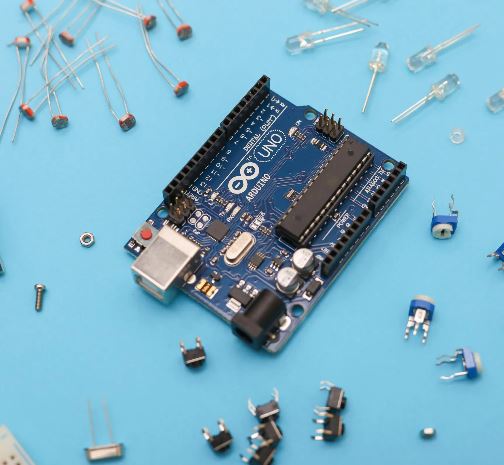Summary Low Voltage Directive 2014/35/EU
The Low Voltage Directive 2014/35/EU aims to ensure that electrical equipment on the market fulfils the requirements providing for a high level of protection of health and safety of persons, and of domestic animals and property, while guaranteeing the functioning of the internal market.

Scope
The Directive 2014/35/EU shall apply to electrical equipment designed for use with a voltage rating of between 50 and 1000 volts for alternating current and between 75 and 1500 volts for direct current. These voltage ratings refer to the voltage of the electrical input or output, not to voltages that appear inside the equipment. Examples of electrical equipment that falls within the scope of the Directive are multiple travel adaptors, voltage detectors and transformers. Equipment and phenomena that fall outside this scope are listed in Annex II of the Directive. Examples are electricity meters, electric fence controllers and radio-electrical interference.
The definition of electrical equipment is not defined in the Directive. The guidelines of the Directive refer to the definition which is given by the IEC (International Electrical Commission). They define electrical equipment as an item used for such purposes as generation, conversion, transmission, distribution or utilization of electrical energy, such as machines, transformers, switchgear and controlgear, measuring instruments, protective devices, wiring material, current-using equipment.
Safety Objectives
Electrical equipment must be constructed in accordance with good engineering practice in safety manners in force in the European Union. Electrical equipment must also not endanger the health and safety of persons and domestic animals, or property and it must also be properly installed and maintained and used in applications for which it was made.
In addition to the above mentioned, the principal elements of the safety objectives must also be met. These safety objectives are:
- General conditions. This includes that the equipment can be used safely and for the purpose it was made. Also, the equipment should be manufactured that it can be assembled and connected safely and properly. Lastly, the equipment must be so designed and manufactured to ensure protection against the above mentioned hazards, providing that the equipment is used for which it is made and is adequately maintained;
- Protection against hazards arising from the electrical equipment. This includes that persons and domestic animals are adequately protected against the danger of physical injury or other harm which might be caused by direct or indirect contact. This also includes that temperatures, arcs or radiation which could cause a danger, are not produced. Furthermore, persons, domestic animals and property are adequately protected against non-electrical dangers caused by the electrical equipment which are revealed by experience. Lastly, the insulation must be suitable for foreseeable conditions.
- Protection against hazards which may be caused by external influences on the electrical equipment. This includes that the electrical equipment meets the expected mechanical requirements in such a way that persons, domestic animals and property are not endangered. The electrical equipment must also be resistant to non-mechanical influences in expected environmental conditions, in such a way that persons, domestic animals and property are not endangered. Lastly, the electrical equipment must not endanger persons, domestic animals and property in foreseeable conditions of overload.
Conformity Assessment Procedure
The conformity assessment procedure that needs to be followed according to the Directive is the internal production control. This conformity assessment procedure entails that the manufacturer needs to fulfill the obligations given to the technical documentation (see below). The manufacturer also needs to take all the necessary measures so that the manufacturing process and its monitoring ensure compliance of the manufactured electrical equipment with the technical documentation and the safety objectives of the Directive. The manufacturer shall take care of the CE-marking, the EU declaration of conformity and ensures and declares on his sole responsibility that the electrical equipment concerned satisfies with the safety objectives of the Directive.
Technical Documentation
The Technical Documentation shall specify the applicable requirements and cover, as far as relevant for the assessment, the design, manufacture and operation of the electrical equipment. The technical documentation shall, where applicable, contain at least the following elements:
- A general description of the electrical equipment;Conceptual design and manufacturing drawings and schemes of components, sub-assemblies, circuits, etc.;
- Descriptions and explanations necessary for the understanding of those drawings and schemes and the operation of the electrical equipment;
- A list of the harmonized standards applied in full or in part the references of which have been published in the Official Journal of the European Union or international or national standards and, where those harmonized standards or international or national standards have not been applied, descriptions of the solutions adopted to meet the safety objectives of this Directive, including a list of other relevant technical specifications applied. In the event of partly applied harmonized standards or international or national standards, the technical documentation shall specify the parts which have been applied;
- Results of design calculations made, examinations carried out, etc.;
- Test reports.
Compliance for the LV Directive with Certification Experts
We are here to help manufacturers navigate the compliance process, prepare the necessary documentation, and verify that their electrical equipment aligns with the safety objectives outlined in the Low Voltage Directive. This ensures your products can be confidently introduced to the EU market with the CE mark. If you need additional information about this directive or require guidance on your specific product, our experts are readily available, please feel free to contact us.
Related articles

Full-service product compliance
Leave it to us.
